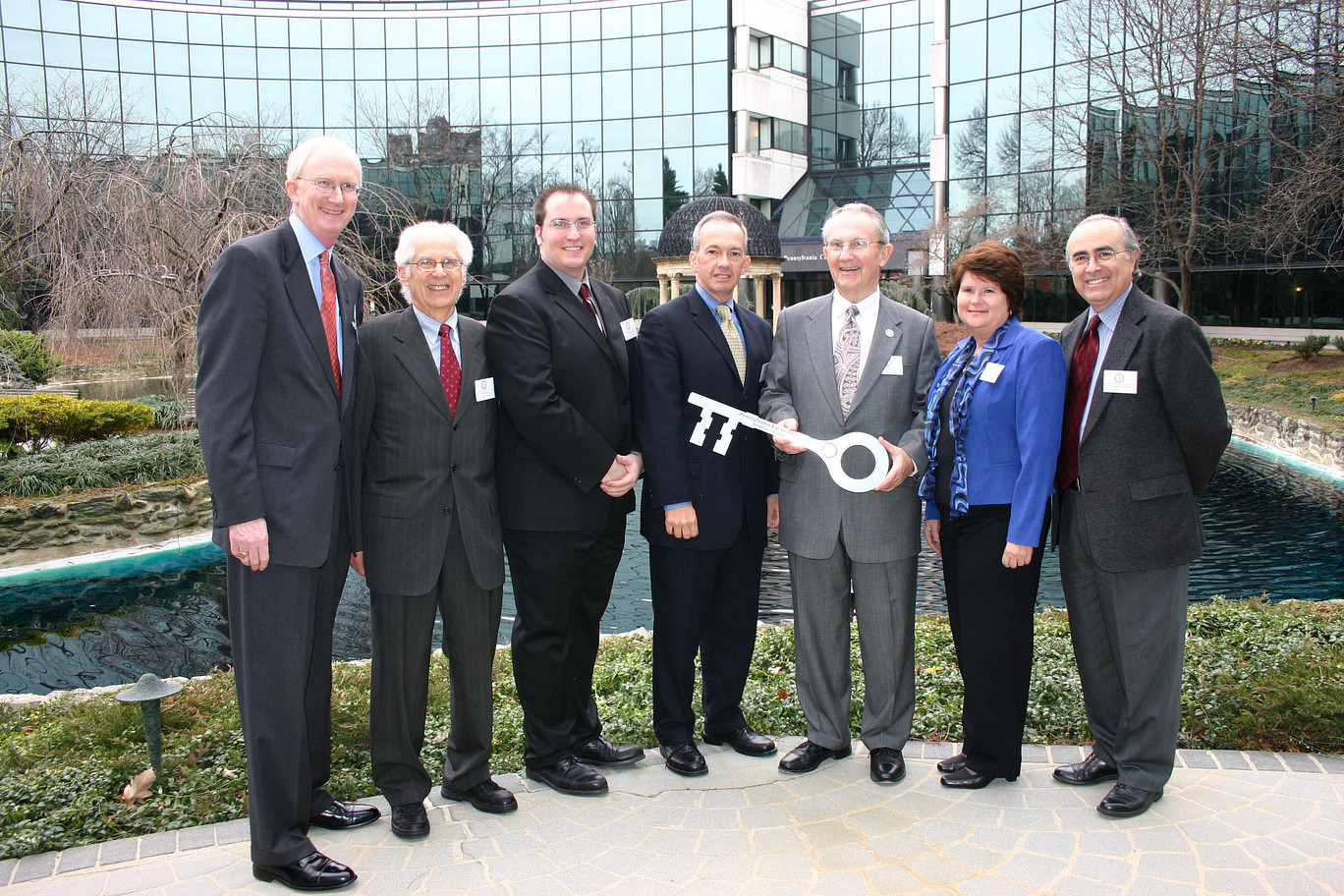
Several years ago, Richard Schmeltzer was walking through the grocery store with a friend when a man approached them.
“You need hearing aids,” the man said to Schmeltzer.
“What?” said Schmeltzer.
“I’ve been calling out to you but you haven’t turned around,” said the man, who happened to be a neurologist. He knew Rebecca Blaha, AuD, lead audiologist at the Pennsylvania Ear Institute (PEI), Salus at Drexel University, and recommended Schmeltzer to set up an appointment.
As the clinical teaching facility for the Osborne Doctor of Audiology program, Schmeltzer was wary about going to a University-related clinical site. He wasn’t enthused about being in a situation involving students, but Dr. Blaha eased his fears.
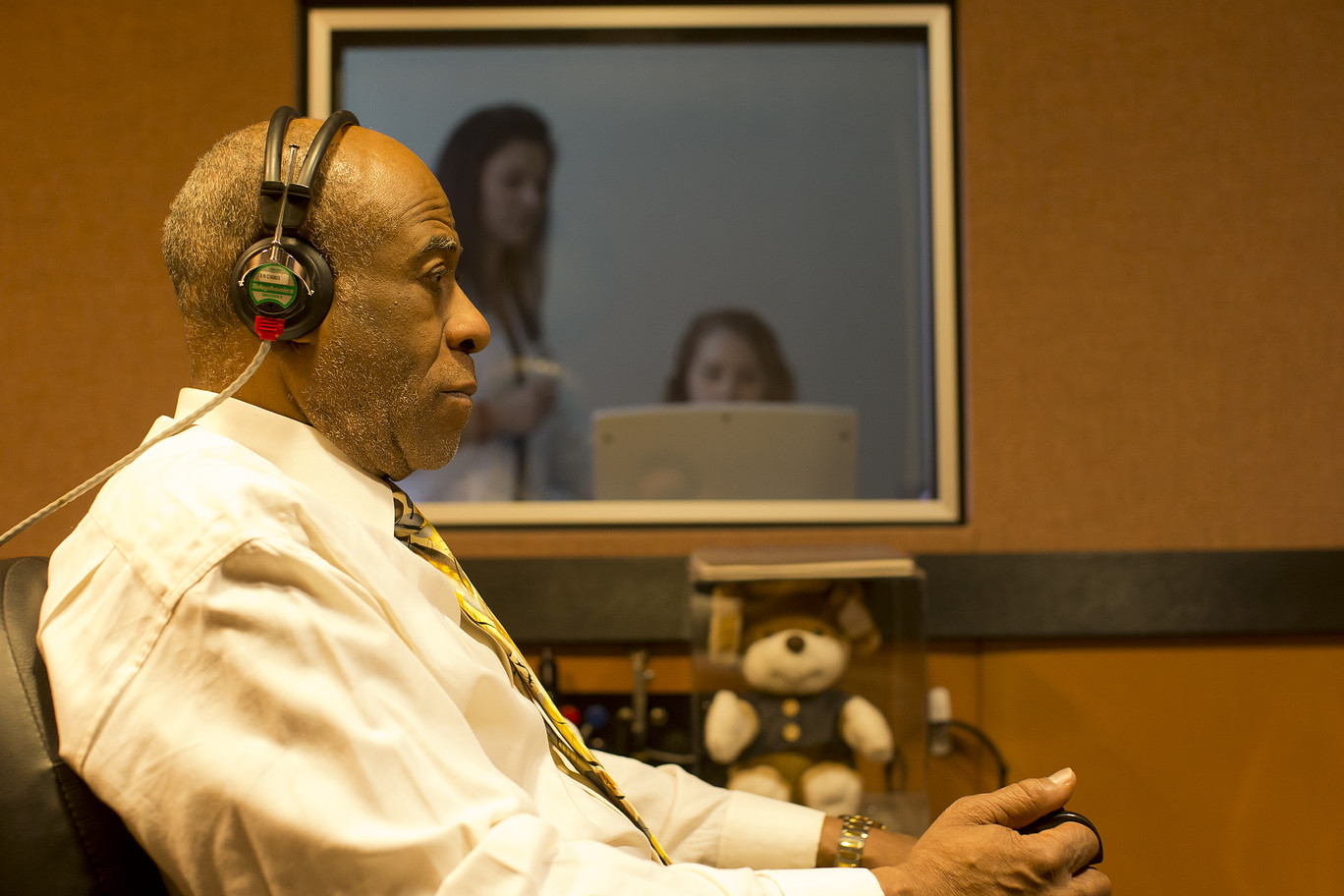 “She said I could come to her because she does the work while she’s teaching the students at the same time,” he said. “It worked out fine and it also gave me a little extra confidence in that she’s teaching somebody and she’s not going to do something in front of her students to embarrass herself.”
“She said I could come to her because she does the work while she’s teaching the students at the same time,” he said. “It worked out fine and it also gave me a little extra confidence in that she’s teaching somebody and she’s not going to do something in front of her students to embarrass herself.”
At that initial appointment, Dr. Blaha let Schmeltzer try on several different types of hearing aids and he selected a brand. But for the first several years though, Schmeltzer “really didn’t get along” with the hearing aids.
“I was sort of in denial. I would only put them in part-time,” he said.
But Dr. Blaha wouldn’t let Schmeltzer give up. She eventually helped him find hearing aids that he could get along with and that really helped him.
“Dr. Blaha always listens and she’s always helpful,” said Schmeltzer. “Now, I can’t get along without her. I trust her, that’s the bottom line. If my hearing comes back to where it’s perfect, I would still visit her at PEI every nine months.”
Those are common stories among PEI patients, how they have been treated and taken care of over the past two decades as the clinical facility celebrates its 20th anniversary, part of a larger 25th-anniversary celebration in 2025 for the Osborne Audiology program.
How it Started
As described in the spring issue of the Alumni Magazine, the Doctor of Audiology program, and ultimately PEI, were visions of George S. Osborne, DDS, PhD. In 2000, Dr. Osborne helped established the PCO School of Audiology, creating a curriculum that combined high academic standards and a strong biomedical component. As founding dean, Dr. Osborne first created a robust and comprehensive program designed specifically as a bridge for licensed, practicing audiologists. At the time, the PCO School of Audiology was one of only five schools nationwide approved for such a program and was the second largest program.
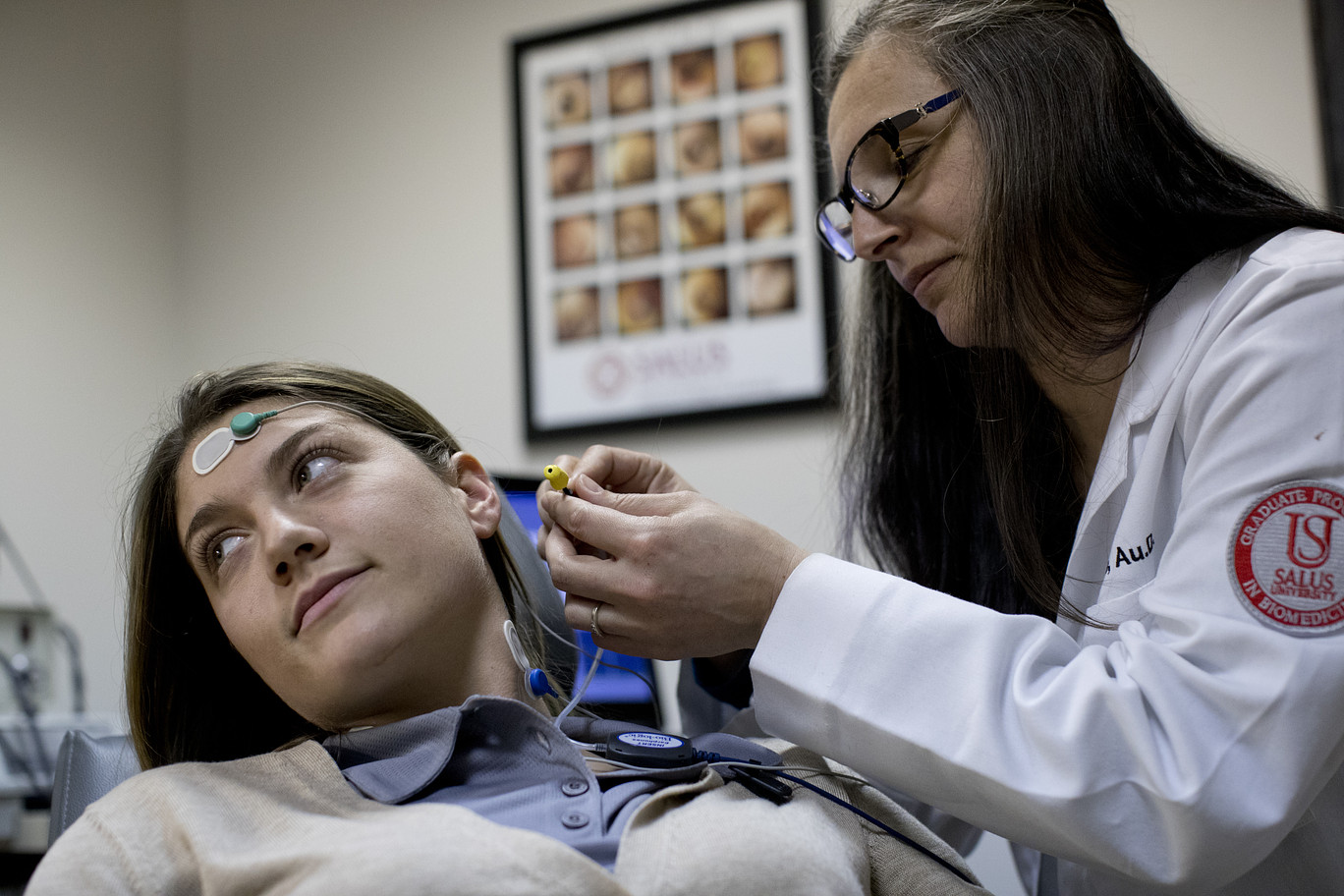 It started with the American Academy of Audiology (AAA) approaching PCO about starting a doctor of Audiology program. AAA officials had met with the Indiana School of Optometry, and that school had declined. So then AAA approached PCO.
It started with the American Academy of Audiology (AAA) approaching PCO about starting a doctor of Audiology program. AAA officials had met with the Indiana School of Optometry, and that school had declined. So then AAA approached PCO.
“They came here and asked us would we start a doctor of Audiology program. And we said yes, it’s consistent with our mission and we want to try to replicate as much of the optometry program into the audiology program as we can,” said Thomas Lewis, OD ‘70, PhD, FAAO, who was president of PCO, and then Salus University, from 1989 to 2013.
Following that model forward, if an institution wants to have a doctorate level program, it needs to have clinical training. And Dr. Osborne, who was a dentist and an audiologist, realized that and was a very strong advocate for it.
“The reason PEI is here is because we had The Eye Institute (TEI) for the optometry program, so it’s logical that you have an ear institute for your audiology program,” said Dr. Lewis. “The idea was that we would train our audiology students the same way as our optometry students with an on-campus clinic. We also had extern rotations like we do for optometry. And that’s the four-year program for audiology.”
According to Anthony Di Stefano, OD ‘73, MEd, MPH, FAAO, FCOptom, then vice president and dean of PCO and now vice president emeritus, one of the biggest challenges that Dr. Osborne faced was where to put PEI. And it took some time and strategic planning to carve out a portion of the north building on the Elkins Park, Pennsylvania, campus, the same space in which PEI inhabits today.
“Dr. Osborne‘s vision was to have PEI as a full-service practice in which students and clinical faculty would collaborate in seeing patients,’ said Dr. Di Stefano. “It was quite an effort to design the facility, to hire the appropriate faculty, and very importantly, to make sure it was equipped with the latest technology.”
It was important for PEI to distinguish itself from other clinical facilities in the Philadelphia area, said Dr. Di Stefano. Probably most symbolic was Dr. Osborne’s effort to purchase the latest technology in vestibular and balance testing.
The Early Years
If an institution is going to train its students in a clinical profession, it needs patients. And in the early days of PEI, it was fortunate in that regard to secure help from the Department of Veterans Affairs, which had a backlog of patients in the Philadelphia region.
“At the time, the VA had a challenge to decrease the waiting time for patients of all types nationwide,” said Dr. Di Stefano. “This was particularly the case for audiology services with waiting times being rather long sometimes weeks and maybe months to get an appointment.”
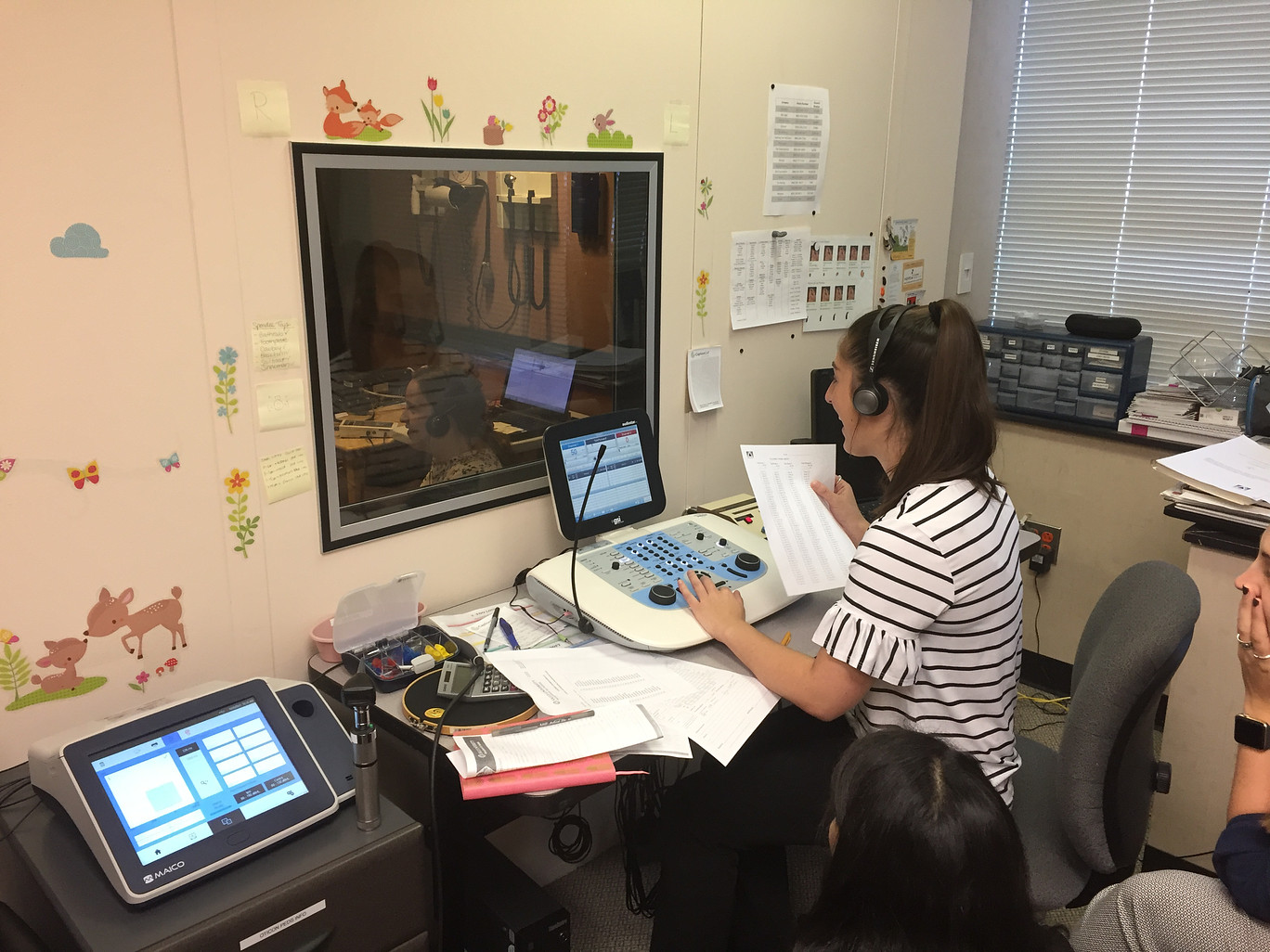 To address this issue the VA nationally, and particularly in Philadelphia, started to utilize the private sector for this endeavor. Initially Philadelphia VA patients were referred to PEI on an individual basis and eventually the demand and the satisfaction with the PEI services created an opportunity to expand the relationship between the two entities.
To address this issue the VA nationally, and particularly in Philadelphia, started to utilize the private sector for this endeavor. Initially Philadelphia VA patients were referred to PEI on an individual basis and eventually the demand and the satisfaction with the PEI services created an opportunity to expand the relationship between the two entities.
The contracts lasted for a few years, and were successful in addressing the backlog. PEI then had to increasingly rely on local and regional referrals and increase external marketing efforts.
“But we weren’t so much interested in the revenue side as we were in creating educational experiences for our students. If you’re going to train in a clinical profession, you need patients,” said Dr. Lewis.
How it has Evolved
When the director’s position at PEI opened up in 2016, it attracted the attention of Lindsay Bondurant. PhD, CCC-A. After earning her master’s in Audiology from Vanderbilt University, Dr. Bondurant was in private practice in Philadelphia for six year before getting her PhD from the University of Texas at Dallas.
She was drawn to several aspects of the position, including her desire to return to a clinical setting, the opportunity to contribute to the clinical facilities growth and the chance to work with graduate students
“When I got here, the program was in great shape,” she said. “We were the biggest AUD program in the country. We had a lot of really bright students coming in, but the clinic at that time didn't have enough patient encounters to really give the students the kind of experience we wanted to give them.”
Hired with specific goals of expanding the clinical facility, increasing patient encounters and enhancing the range of services offered, Dr. Bondurant focused on ensuring the best possible experience for incoming and current students. To grow the patient base, she strategically planned to increase the population through the development of community outreach initiatives.
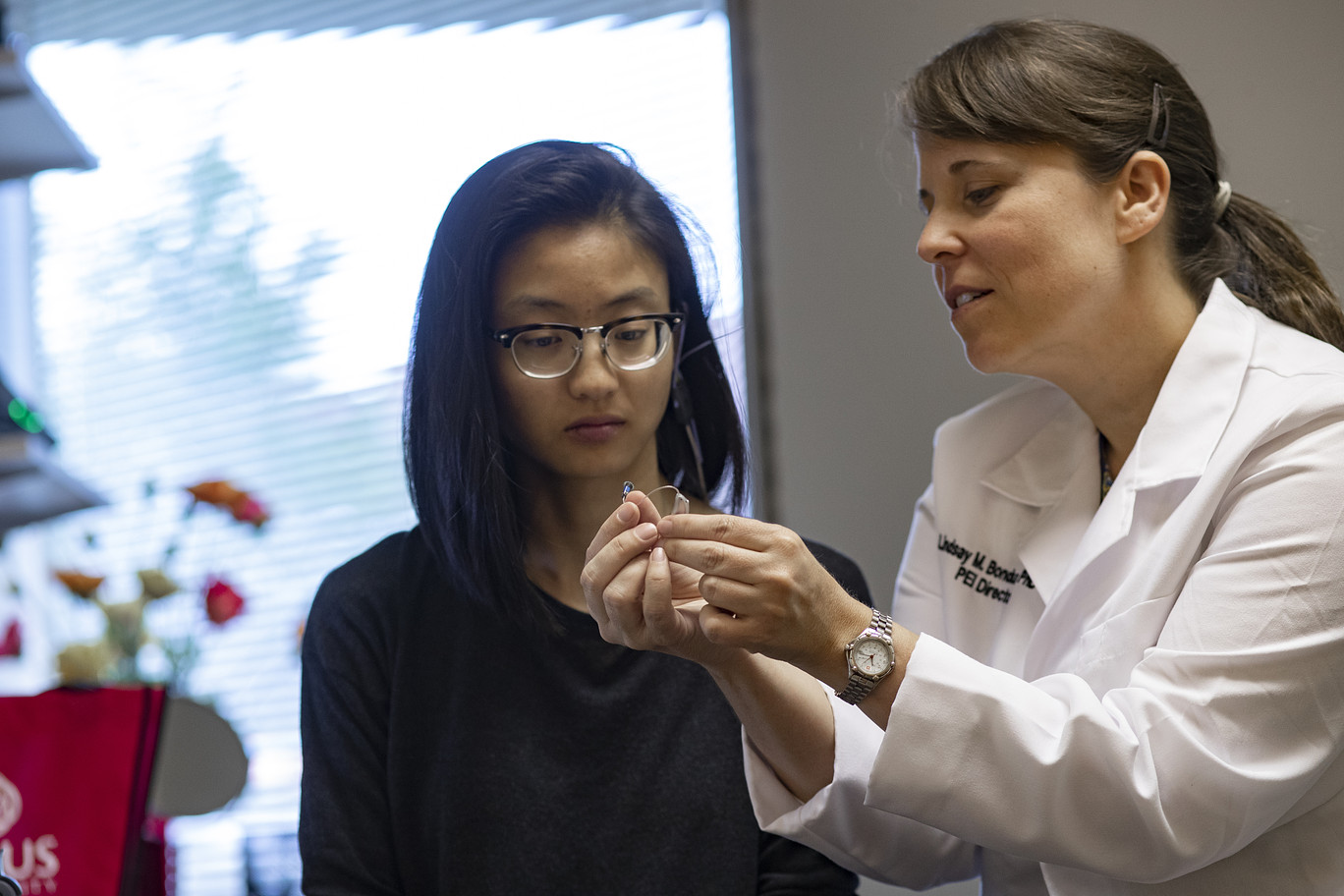 “We did lots and lots of health fairs, hearing screenings, meeting with community leaders, trying to give informational talks at community centers, educate people in our community about what audiology is, what hearing loss is and what services we provided at PEI,” she said.
“We did lots and lots of health fairs, hearing screenings, meeting with community leaders, trying to give informational talks at community centers, educate people in our community about what audiology is, what hearing loss is and what services we provided at PEI,” she said.
In addition, Dr. Bondurant also reached out to referring physicians, primary care doctors, pediatricians, specialist and Ear, Nose and Throat (ENT) specialists to educate them on what services PEI offered.
Still, the focus has always remained on the student experience. PEI is the foundational clinical experience for students in the program, so in the first semester, students get to observe patient care with experienced audiology preceptors. And then students start their clinical rotations in their second semester.
“Students have the opportunity to start interacting with patients, providing evaluations from a very early time in the program,’”said Dr. Bondurant. “So that helps to build the students' foundational skills in adult diagnostics and adult hearing aids.”
But that’s not all. In addition to basic adult diagnostics and hearing aids, students also see pediatrics patients, do vestibular or balance testing, and learn about tinnitus, cerumen removal, auditory processing testing and other specialties within audiology.”
Down the Road
PEI has been in growth mode, but what’s in store for the next 20 years and beyond?
Right now, the physical space and the amount of staff needs to be increased so it can continue to serve its patients and incoming students, according to Dr. Bondurant.
“What I would really like to see is additional clinic space and additional professionals to see patients in the different specialties and to accommodate our current patients,” she said. “What I'm hoping is to continue to grow, as the next frontier for us is trying to grow our specialty clinics.”